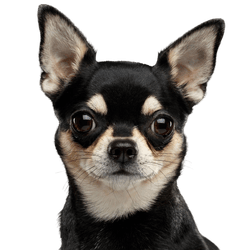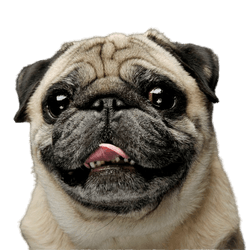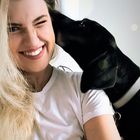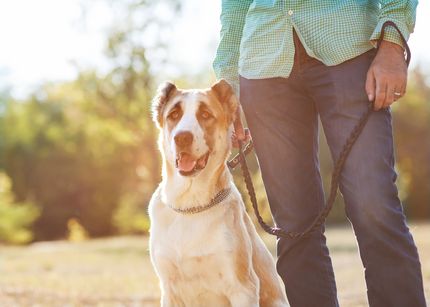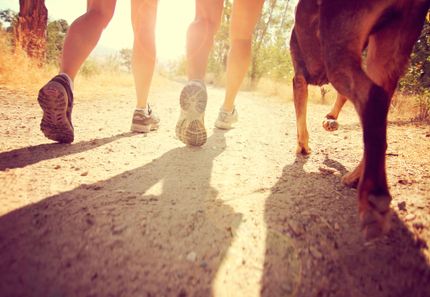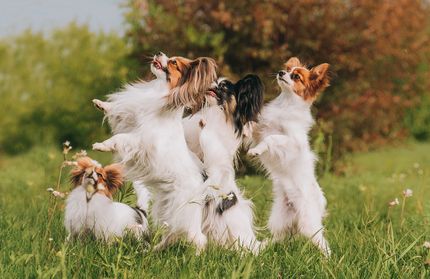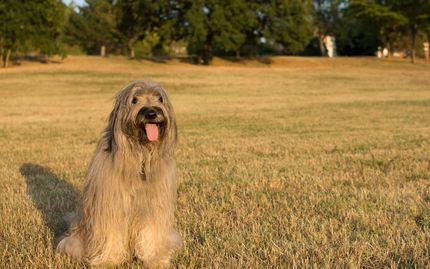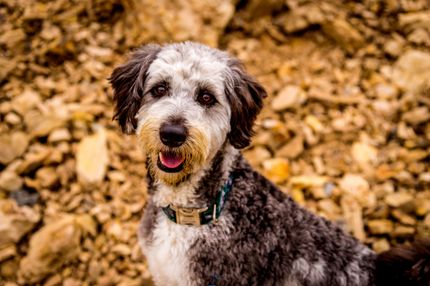Facts & Origin
The Chug - a mix of Chihuahua and Pug
The Chug is a cross between the Chihuahua and Pug breeds. These designer dogs have become popular in recent years as they are often perceived as particularly cute and compact. However, there is considerable criticism of this crossbreed, mainly because of the health risks that can arise from the characteristics of the parent animals.
Criticism of chugs
One of the main points of criticism of Chugs is the breeding practice of designer dogs, which is often tainted with torture breeding traits. Both the Chihuahua and the Pug have health problems that can be passed on to their offspring.
Chihuahua: These dogs are known for their small stature, which can lead to problems such as misaligned teeth and heart disease. Their frequent eye disease and tendency to patellar luxation (dislocation of the kneecap) are also health concerns.
Pug: The Pug is a brachycephalic breed, which means it has a short head and a flat muzzle. This leads to breathing problems such as brachycephalic obstructive airway disease (BOAS). The respiratory distress that often occurs in these dogs can significantly affect both quality of life and life expectancy.
The crossbreeding of these two breeds often results in respiratory problems, eye diseases and orthopaedic problems in the Chug. The genetic diversity in such crosses is also often limited, which increases the likelihood of hereditary diseases.
What are chugs suitable for?
Despite the health risks, Chugs are popular as pets in certain households, especially for people with limited space or single people. They are small, adaptable and don't require too much exercise, making them ideal companions for people looking for a dog that doesn't need a lot of exercise. They are also often very affectionate and loyal and can make good apartment dogs.
However, when keeping a Chug, you should always be mindful of regular vet visits and be aware of the health challenges associated with breeding dogs with agony traits.

| Alternate Name | Chihuahua - Pug mix |
| Origin | Mexico - China |
| Life expectancy | 12 - 20 years |
| Care requirements | low-maintenance |
| Activity level | low |
| FCI group | not recognised |
| AKC group | not recognised |
| KC group | not recognised |
More Chihuahua mixes
More Pug mixes
Attitude, character and temperament of the breed
Possible character traits
The character traits of Chugs often combine the characteristics of their parents, the Chihuahua and the Pug. In general, they are affectionate, lively and very attached to their owners.
Affectionate and loyal: Chugs are known to bond strongly with their owners. They often seek to be close to people and enjoy being the center of attention. These dogs are extremely loyal and can be very cuddly and caring in a household.
Lively and playful: Chugs have a lot of energy and are usually very playful as well. They enjoy interacting with their owners, be it through play or little tricks. Especially when they are young, they can be very lively and active, even if they don't need as much exercise as larger dogs due to their small size.
Confident and courageous: Chihuahuas in particular are known for their courageous character, and the Chug can also adopt this trait. Despite their small size, they often show little shyness towards larger dogs or unfamiliar situations. They are confident, which helps them to find their way in new environments.
Stubborn and independent: Chugs can also be a little stubborn, which combined with their independent nature can sometimes lead to challenges in training. They are not always the easiest dogs to get along with when it comes to obeying commands and need consistent but friendly training.
In everyday life
In everyday life, Chugs are often uncomplicated, especially if their exercise and grooming needs are taken into account. Their small size makes them ideal apartment dogs that need little space and can also get along well in an apartment. They don't need long walks, but regular, short outings are important to burn off their energy and boost their health.
Because they are so affectionate, Chugs can suffer from separation anxiety if left alone for long periods of time. It is important to gently acclimate them to being left alone to avoid behavioral problems such as excessive barking or destroying furniture.
For older people or families looking for a compact yet lively dog, Chugs are a good choice as they cope well with different lifestyles. However, owners should be aware that Chugs, like many designer dogs, have potential health challenges that require regular vet visits.
Character
Usage
What diseases can occur?
Chugs, like many designer dogs, can inherit a variety of health issues stemming from the parent Chihuahua and Pug breeds. These health challenges often arise due to the torturous breeding traits of both breeds. It is important to be aware of the potential risks when choosing a Chug to ensure the best possible care and maintain the dog's quality of life.
Breathing problems (brachycephalic syndromes): Since the Pug is a brachycephalic breed known for its short snout, the Chug can also suffer from breathing problems. Many Chugs have difficulty breathing, especially in hot weather or during strenuous exercise. This can lead to a condition called Brachycephalic Obstructive Airway Syndrome (BOAS), where the airways are constricted and the dog has difficulty getting air.
Eye diseases: Both parent breeds, the Chihuahua and the Pug, are prone to eye diseases such as cataracts, glaucoma or dry eye (keratoconjunctivitis sicca). Chugs can also develop these hereditary diseases. In addition, their protruding eyes can make them more susceptible to injury or infection.
Heart problems: Heart disease such as mitral valve insufficiency (a common heart condition in small dogs) is particularly common in Chihuahuas. Chugs can also suffer from this or other heart conditions that can lead to problems with blood circulation and heart failure.
Patellar luxation (dislocation of the kneecap): Another common health challenge in Chugs is patellar luxation, which can occur in either parent. This causes the kneecap to pop out of its normal position, which can cause pain and limping. This condition may require surgery in severe cases.
Dental problems: Due to their small tooth size and narrow jaw position, Chugs are more likely to suffer from dental problems, especially plaque and gingivitis. Regular dental care is crucial to reduce the risk of tooth loss or other problems.
Obesity and joint problems: Chugs tend to become overweight, especially if they don't get enough exercise or are fed too much. Obesity can exacerbate joint problems such as osteoarthritis, especially in dogs that have a genetic predisposition to joint disease. A balanced diet and regular exercise are therefore important.
Skin problems: Some Chugs are prone to skin infections or allergies, especially if they have sensitive skin. The skin folds that the Pug has passed into its genes can also make it prone to skin irritations or fungal infections if not regularly groomed and dried.
The health problems of Chugs are primarily a result of breeding practices that combine traits from both parents. The most common health problems concern the respiratory system, eyes, heart and joints, which requires regular visits to the vet and careful grooming. It is advisable to monitor the Chug early on for health problems and to pay attention to good nutrition, exercise and hygiene to minimize the risk of complications.

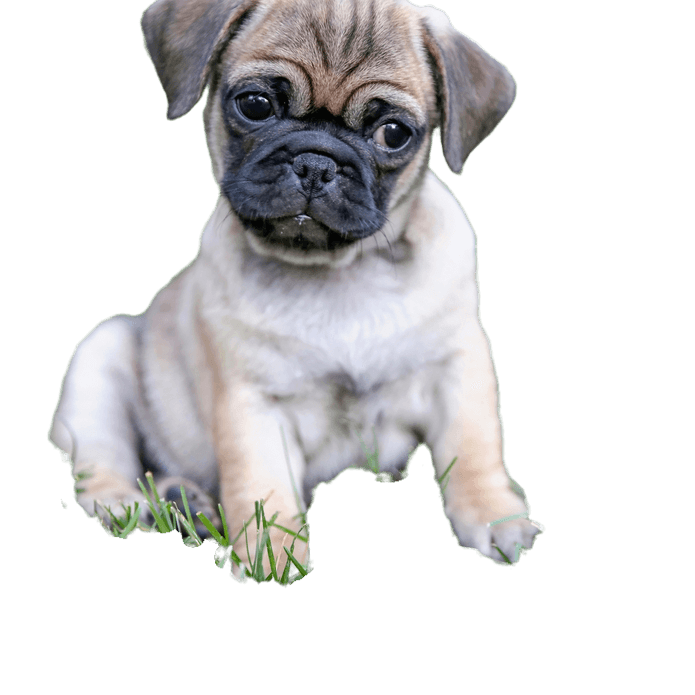
What does this mixed breed look like?
Chugs have a distinctive appearance due to their mixed Chihuahua and Pug ancestry, often combining the best features of both breeds. However, there is some variation in their appearance as they are a mix of two very different breeds.
Chugs are small dogs, usually measuring between 20 and 30 cm at the shoulder and weighing between 3 and 6 kg. They are compact and manageable, which makes them good apartment dogs.
The head of a Chug can be a mixture of the round, flat face of the Pug and the more pointed head of the Chihuahua. They often have a slight flattening of the muzzle, but not as extreme as the Pug, which means they have slightly less breathing problems compared to other brachycephalic breeds. Their eyes are often large and round, with an expressive and alert expression. Chugs can have both erect and drooping ears. However, the ears are often semi-erect, which is a characteristic they inherit from the more droopy ears of the Pug and the erect ears of the Chihuahua.
Chugs have a compact, muscular body that is influenced by both the Pug and the Chihuahua. Their body is often short and strong, which makes them stable and agile, even though they are relatively small.
A Chug's coat can vary depending on whether they have inherited more from their Chihuahua parent or their Pug parent. They often have short, smooth or slightly shiny coats that can come in a variety of colors, including brown, black, fawn, white and cream. Some Chugs have light coat textures or patches of color that they inherit from one or both parents.
The tail of a Chug can be either straight or slightly curved. In some Chugs, the tail is twisted in a corkscrew shape, reminiscent of the Pug, while others have a flat, straight tail.
Known Diseases
Eye diseases
Often occur with allergies and intolerances.
Hypoglycemia
If an insulin dose was overdosed or accidentally administered twice, the dog may experience hypoglycemia.
Tartar
If dogs don't get a good food or sugary food, tartar can quickly appear.
Eye infections
Chronic eye infections can be very painful in dogs and can be treated with medication. In rare cases, the cornea must be treated.
Hip dysplasia (HD)
Hip dysplasia (HD) is a genetic condition in dogs where the hip joint is not shaped properly. This leads to pain, stiffness and restricted movement.
Denture malocclusions
Malocclusions of the dentition often occur in dogs with short muzzles.
Shortness of breath
Difficult breathing can be recognized by the dog's rattling and sometimes accelerated breathing rate.
Overweight
Often, unfortunately, the dogs very much under excess weight. But the dogs themselves are never to blame!
Heart disease
Can occur frequently in dogs and can sometimes be treated with medication.
Breathing problems
Dogs with shortened muzzles can often experience respiratory problems.
FAQ
-
A Chihuahua-Pug mix typically has the head and body of a Chihuahua and the short legs of a Pug. These dogs usually have a short, smooth coat that can be any color.
-
Chihuahua and Pug mixes are usually playful and friendly. They can be protective of their family, but they are usually good with children and other animals.
-
Chihuahua and Pug mixes need moderate exercise. A daily walk or a play session is sufficient.
-
Chihuahua and Pug mixes are prone to the same health problems as their purebred parents. These include joint problems, respiratory problems and dental problems.
-
Chihuahua and Pug mixes usually live to be 12-15 years old.

